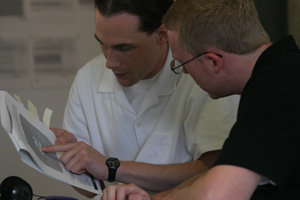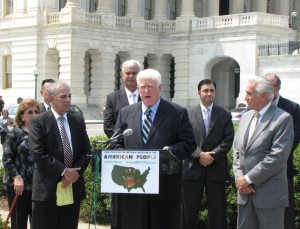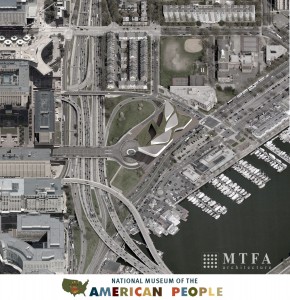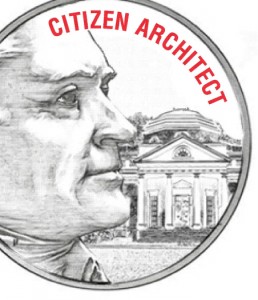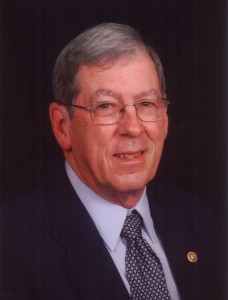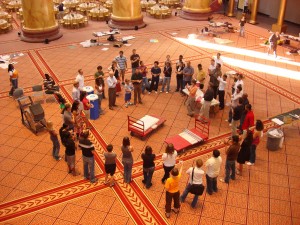
Imagine being the statue that crowns the U.S. Capitol. Yikes, it’s high up! Looking down, the houses of Congress appear unified. Looking out and around, the geometry of L’Enfant’s plan is evident and reflects the beauty of the Golden Section. From this vantage point, you can see great buildings where diverse voices come together – the White House, the National Building Museum, the National AIA Headquarters and so many more. Connected by majestic bridges in the distance is Virginia — a symbol of the unity to the West and all the states in our democracy.
We know that at ground level things don’t measure up to this utopia. Unity in Congress is harder to achieve as our mounting multi-trillion dollar debt seems to have no end in sight. Similarly, the AIA finds itself divided into fiercely independent and competitive chapters and state components. I often hear that the National Institute is out of touch with its members. Within each chapter we create events that primarily focus on architects and don’t make clients and allied professionals feel welcome. Most professors of architecture are not members of the AIA and downplay the role of the AIA in our profession. Many young and emerging professionals view the AIA as an exclusive club for seasoned architects. Sometimes, we don’t connect.
Ah, but magic happens when we do connect. We can move mountains! Consider these examples from around Virginia:
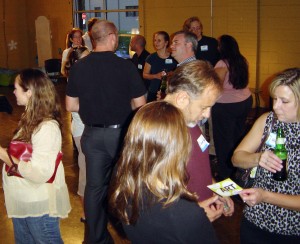
The AIA Richmond hosts an event called Front Porch to engage similar minded individuals, outside of our profession to become partners in championing the causes promoted by the AIA such as sustainable communities and the power of thoughtful design. The guest list includes the entire creative class of Richmond…artists, photographers, actors, graphic designers, ad agency executives, chefs, hair dressers, modeling agencies, etc… Ed Gillikin, AIA says that “the chapter members forge a connection with these unique individuals while being surrounded by good food and live music.”
Through School Connections, the AIA Northern Virginia Chapter fosters collaboration between practicing architects, students and professors. Current committee chair, David Prevette, AIA, says that mentorship experiences abound through amazing programs. Students, as well as young and emerging architects, are encouraged to participate in competitions, design awards, portfolio reviews, emerging leadership programs, IDP programs, forums, seminars, tours and more.
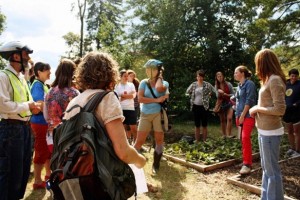
Throughout Virginia, Architecture Week is a way to connect to the community through various architectural programs that strive to empower and educate. For example, Elizabeth Rhodes from AIA Central Virginia says that “Architecture Week gives us a reason to bring accomplished guests to Charlottesville showcasing our industry and our talented group of community design members.”
AIA Hampton Roads is interested in creating stronger links with allied professionals and the community. Director Rob Reis, AIA says that the Chapter accomplishes this through an array of interesting, informative, or entertaining events such as narrated historic walking tours, hard hat tours, the Annual Speaker Meeting and Pecha Kucha Night. These are promoted through various arts groups, community associations and professional organizations to engage diverse and enthusiastic participants.
Bill White, AIA from the AIA Blue Ridge describes with enthusiasm how his chapter links to Allied Professionals through joint meetings. This year they had 15 organizations participate including contractors, interior designers, engineers, planners and landscape architects and the USGBC of southwest Virginia. This led to the founding of the “RATPAC” – Roanoke Area Task-force of Presidents and Chairs.
As many of you already know, the Virginia Society AIA has been promoting public and professional collaboration by implementing the new, vibrant, Long Range Plan. This plan encourages interaction between us all… young and old, individual designers, chapters of the AIA, students, professors, allied professionals, communities and more. In the last couple of months we have focused on connecting to allied professionals that we know from our daily, professional lives. Board members have reached into their address books, and they have made hundreds of contacts with the hope that we can become a far more diverse membership and reap the rich rewards of these connections. Would you be able to send the VSAIA a few names of professionals that you work with that should be allied members? Just think, if every member brought in just one allied member to the AIA, we would be one of the largest components in America!
Now, again, imagine being the statue at the top of the capitol. You are balancing on a globe (yippee … yikes!) that is inscribed with the words “E Pluribus Unum.” That motto should also be our institute’s goal – “out of many, one.”
JIM
James P. Clark, AIA
VSAIA President

